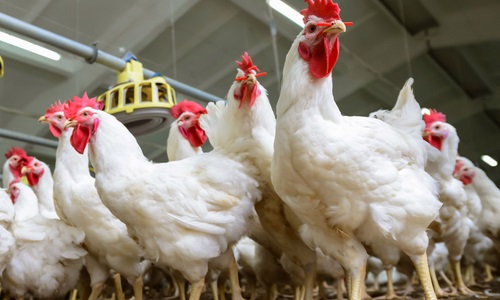
The Fundamentals of Poultry Farming: Best Practices for Health and Productivity
Poultry farming is an essential component of modern agriculture, playing a crucial role in providing high-quality protein in the form of meat and eggs to meet the growing demands of an increasing global population. Whether on a small-scale backyard farm or a large commercial operation, proper poultry husbandry practices are fundamental to ensuring the health, productivity, and profitability of poultry enterprises. Effective poultry management requires a deep understanding of housing, nutrition, disease control, biosecurity, and animal welfare. By adopting best practices in poultry husbandry, farmers can optimize production, minimize losses, and contribute to a sustainable food system.
1. Housing and Environmental Management
Providing a well-structured housing system is vital for poultry health and productivity. Proper housing ensures birds are protected from environmental stressors, predators, and diseases, while also allowing efficient management practices.
a) Housing Systems
- Deep Litter System: Birds are raised on the ground covered with bedding materials such as wood shavings, straw, or rice husks. This system is cost-effective and allows birds to express natural behaviors but requires regular maintenance to control ammonia buildup and disease risks.
- Cage System: Primarily used for layers, this method involves keeping birds in wire cages, which facilitates easy egg collection, efficient space utilization, and reduced disease transmission. However, it requires higher initial investment and regular cleaning.
- Free-Range System: Birds have access to outdoor areas for natural foraging, which improves welfare and reduces feed costs. However, this system exposes birds to predators and environmental hazards.
b) Ventilation and Temperature Control
Good ventilation is crucial for maintaining air quality by removing excess moisture, heat, and ammonia buildup. Temperature control is especially important for chicks, as their thermoregulation capacity is limited. The ideal brooding temperature starts at 32-35°C for the first week and is gradually reduced.
c) Lighting and Space Requirements
- Lighting: Influences growth and egg production. Layers require 16 hours of light daily to maintain consistent egg-laying cycles.
- Space Allowance: Overcrowding can lead to stress, increased disease transmission, and reduced performance. Recommended space per bird:
- Broilers: 0.1-0.2 square meters per bird.
- Layers: 0.2-0.3 square meters per bird.
2. Nutrition and Feeding Management
A well-balanced diet is essential for maximizing poultry growth, health, and production. Poultry feed must contain the right proportions of proteins, carbohydrates, fats, vitamins, and minerals.
a) Types of Poultry Feed
- Starter Feed: High-protein (18-22%) diet for chicks during the first few weeks.
- Grower Feed: Moderate-protein (15-18%) diet for growing birds.
- Layer Feed: Rich in calcium and phosphorus to support eggshell formation.
- Finisher Feed: High-energy diet given to broilers before slaughter.
b) Feeding Methods
- Ad libitum (Free Feeding): Allows birds to access feed continuously, ensuring rapid growth (mainly for broilers).
- Restricted Feeding: Controlled feeding schedule, mainly for breeders to prevent obesity.
c) Water Management
Clean, fresh water must always be available. Birds generally consume twice as much water as feed intake. Water sources should be kept clean and free from contaminants to prevent diseases.
3. Disease Prevention and Biosecurity
Poultry diseases can cause significant economic losses, making prevention a key aspect of farm management. Effective disease control includes vaccination, sanitation, and strict biosecurity measures.
a) Common Poultry Diseases and Prevention
- Newcastle Disease: Causes respiratory distress and neurological symptoms; controlled through vaccination.
- Avian Influenza: A highly contagious viral disease requiring strict biosecurity measures.
- Coccidiosis: Parasitic infection leading to diarrhea, controlled through good hygiene and coccidiostats.
b) Biosecurity Measures
- Restricted Entry: Limit farm access to essential personnel only.
- Disinfection: Regular cleaning of equipment, footwear, and poultry houses.
- Quarantine: Newly acquired birds should be isolated for at least two weeks before integration.
- Rodent and Pest Control: Prevents disease transmission by keeping the farm pest-free.
4. Poultry Welfare and Behavioral Management
Ensuring good poultry welfare is crucial for ethical farming and better production outcomes.
a) Stress Reduction
- Avoid sudden environmental or dietary changes.
- Maintain a calm, low-stress environment to reduce fear and aggression.
b) Beak Trimming and Debeaking
- Performed in layers to prevent pecking injuries but should be done ethically by trained personnel.
c) Molting Management
- Forced Molting: Used in commercial production to rejuvenate egg-laying cycles but must be managed humanely.
5. Waste Management and Environmental Impact
Poultry farming generates significant waste, including manure, feathers, and unused feed. Proper waste management is essential for maintaining hygiene and reducing environmental pollution.
a) Manure Management
- Poultry manure is a valuable organic fertilizer rich in nitrogen and phosphorus.
- Composting manure reduces odor and enhances nutrient availability.
b) Dead Bird Disposal
- Carcasses should be disposed of hygienically through burial, incineration, or composting to prevent disease outbreaks.
Conclusion
Poultry farming is a dynamic and profitable enterprise when managed with proper husbandry practices. From providing optimal housing and nutrition to implementing biosecurity measures and ensuring ethical animal welfare, every aspect plays a critical role in the success of a poultry farm. By adhering to these best practices, poultry farmers can achieve high productivity, maintain flock health, and contribute to sustainable food production. Whether one is a smallholder or a commercial poultry producer, embracing these fundamental husbandry principles will lead to long-term success in the poultry industry.

Sudhir Kumar1, and Simran jeet Singh 2
1Assistant professor, Department of Veterinary Physiology and Biochemistry
2 PG Scholar, Department of Veterinary Medicine
1,2 College of Veterinary and Animal Sciences, GB Pant University of Agriculture and Technology, Pantnagar, Udhamsingh Nagar, Uttarakhand- 263145















